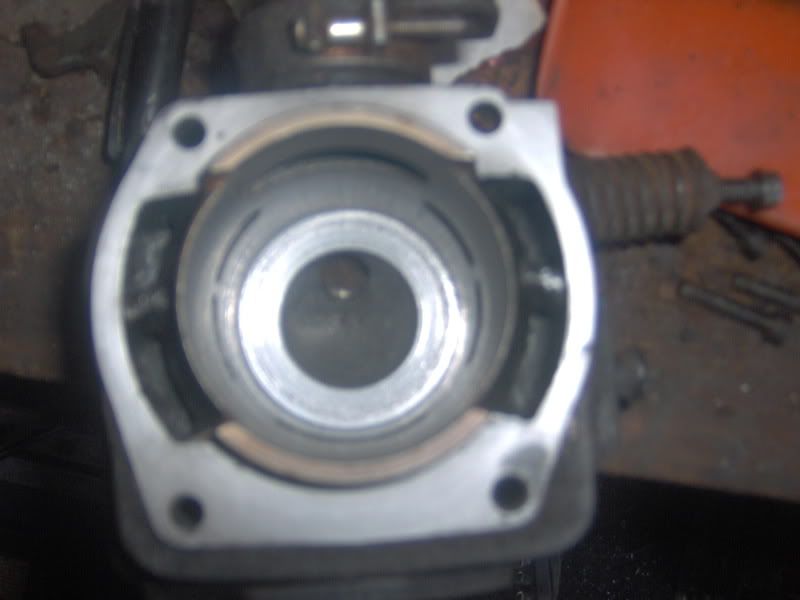the squish does not mean much.
The compression will vary a little, but that's about the size of it.
This sounds a bit like a myth in its self to me.
Taking the 288 saw as an example with a 8cc combustion chamber and .025 squish height and say 160 lb of compression with a squish band 7mm wide, 10,000 RPM in the cut.
By my calculation:
Piston area is 2290 mm2, area under squish band is 1018 mm2
The squish area to bore area is 45.13%
Trapped end gas is going to be 7.15%
Maximum squish velocity (MSV) is going to be 31.89 m/s @ 12 deg BTDC
Now if squish is brought down to a tight .014 squish height here is what I see happening
Head volume will drop to 7.36 cc
Compression will go up to about 173 PSI
Trapped end gas will drop to 4.21%
Maximum squish is going to go up to 45.14 m/s and be delayed until 9 deg BTDC
Net effect is going to be about a 3% gain in power netted from combustion due to the reduction of end gas and about 2.5% gain from improved thermal efficiency from the additional compression. Also increased squish velocity should improve combustion efficiency a little also. However in the case of going to a squish this tight the MSV is coming quite late in the combustion phase and there may be some interference between outgoing gas from the squish and the expanding combustion cloud forcing more unburnt fuel into the squish where it becomes additional end gas. Overall dropping the squish height from .025 to .014 should produce a little better than a 5% gain in output and that is pretty significant and measurable with a block and stopwatch.
A MSV of 30 m/s is often referred to as a good maximum, However this number relates to bikes and sled research with a more square bore to stroke ratio in mind, with saws having a significantly over-square design both the squish gasses and expanding combustion cloud must travel further before they come into interference, so the upper limit of productive squish velocity is most likely higher than 30 M/S
PS
Made the program to do the calcs up my self, it's all pretty straight forward math, but pretty much impossible to do without a computer simply due to the number of calculations required. Did not cost me a dime, so I guess that busts the myth on needing








